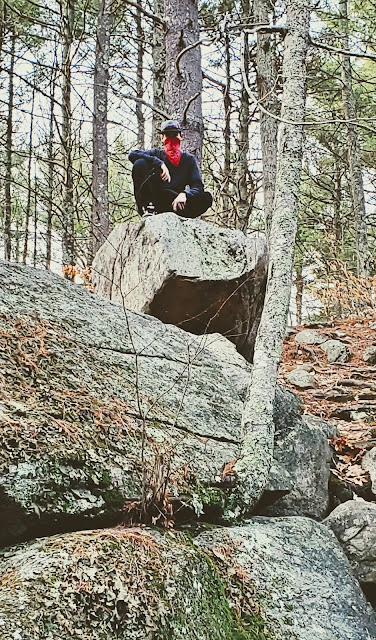**URBAN EXPLORING/PARANORMAL POST** Visit to Purgatory Chasm!
Purgatory Chasm is located in Sutton, MA and was named a state park in 1919. According to popular theory, it was created around 14,000 years ago when glacial meltwater that had built up finally burst its restraints and rushed through the area. The torrent was so strong that it ripped through the landscape tearing pieces of bedrock along in its wake, carving the chasm we see today. It consists of a half-mile long stone wash that runs between the massive granite walls. At some points along the chasm trail, the walls rise 70 feet up into the air. Some of the stones overhang the hiking trails and ominously loom over your head. Some points of the hike narrow to cracks in giant rocks just a little over a foot wide. It has plenty of trails that run along side the chasm itself, and one that runs right through the amazing granite walls. I loved visiting this place, and I wish I had planned my timing better so I could explore more. This is a spot that I will 100% be visiting again.
There is some colonial/Native American lore attached to Purgatory Chasm, and I also found it pretty interesting that it looked as though Viking rune symbols had been carved into parts of the stone and a couple of the trees.
The legend goes as such: An Algonquin Indian woman killed a white colonial settler (for reasons unknown) and as she tried to flee the scene of the crime, she came upon another settler who asked her to join him as company on a short walk. However, since she had just murdered one of his people, she was fearful and tried to run away instead. He managed to grab her by the wrist, and she called out to the Native American god Hobomoko to save her. But when she did this, the second settler revealed himself as none other than Hobomoko in the flesh. Morphing into a devil-like guise, Hobomoko grabbed his captive by the waist and flew to Purgatory Chasm. Colonists said that the devil's actions on that day formed the chasm. The deep depressions were allegedly the places he stomped and threw his victim. The large, deep cuts in the rocks were the results of a swinging tomahawk.
Historians say that the legend actually served a religious purpose in the colonists' efforts to Christianize Native Americans. By demonizing Hobomoko and creating a parable-like warning out of the woman's murder, they cautioned Natives out of their own faith with the hope of bringing them to Christianity.















Comments
Post a Comment